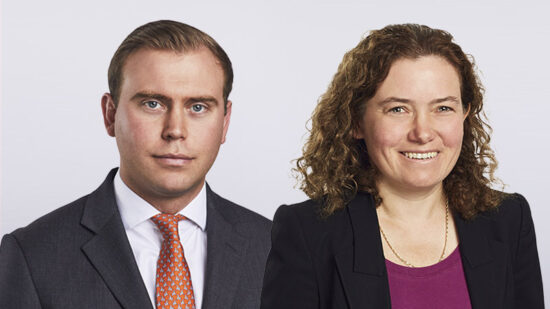As rates rise, investors have been scouting around for alternatives to standard fixed income investments.
Convertible bonds – which carry shorter durations and are subsequently less sensitive to interest rate rises – can provide higher yields than traditional bonds during tightening cycles and have seen an uptick in demand this year.
Pan-European fund selector appetite towards the asset class has gently increased over the last quarter, according to Last Word Research. UK fund selectors have viewed the asset class mildly positively over the past two quarters and convertibles are used by about 40% of respondents.

“In bear markets – such as the dotcom crash and the global financial crisis – convertible bonds have had shallower drawdowns and have recouped their losses much faster than equities have taken to recoup their losses.”
Rising rates combined with the surge in volatility this year has encouraged investor interest in the asset class, says Pierre-Henri de Monts de Savasse, a fund manager focused on convertibles at Bluebay Asset Management.
“The chief advantage of convertible bonds is that they can produce returns close to that of equities over a long-term period but with reduced risk,” he says.
Turbulence and opportunity
This year is set to be the most volatile year on the S&P 500 since 2015 and as the quantitative easing era comes to an end and rates continue to rise, the market turbulence is likely to continue.
The CBOE Volatility Index – the Vix index – has been more-or-less above 20 over the last six weeks suggesting a heightened expectation of near-term volatility. “Volatility is here to stay,” de Monts de Savasse adds.
“The reason that you’re seeing interest pick-up in convertible bonds is because investors are uncomfortable with going long on equities [because of the rise in volatility] and uncomfortable with long duration fixed income [because of rising rates],” he says.
However, de Monts de Savasse points out this trend is combined with a generally positive global growth outlook.
Global GDP growth is expected to slow to 3.5% in 2019 because of the US-China trade dispute, according to the OECD. The full-year forecast for this year is 3.7%.
“The outlook for economic growth around the world may slow a bit but it will remain healthy,” he says.
“Healthy growth means many investors are reluctant to make trades that are too defensive. They think growth is going to be okay – there is no direct threat of a recession or a major slowdown, for example – and they still want to be exposed to positive growth and are not outright negative on equities.
“Convertible bonds, therefore, allow investors to manage risk and as well as providing some exposure to gains in equity markets and preserve some potential in a portfolio.”
Risk protection
Nonetheless, if market conditions do take a turn for the worst, investors are still left holding a fixed income asset.
“Some convertible bond instruments can be quite equity sensitive. If there is a strong rally in equities, an investor may ask for a conversion at the end of the life of the instrument. But if you enter a bear market – if there is a sudden and deep market correction – then the investor may ask not to convert to equity and ask the company to repay the debt,” de Monts de Savasse says.
Convertible bonds typically have average maturities of 5.2 years and average duration of 4.2 years, according to Stamford Associates.
He adds that many convertible bond instruments have a call option component – allowing the investor to buy assets at an agreed price on or before a particular date – further reducing actual sensitivity to rising interest rates.
As a result, the convertible bond universe has an average effective duration of two years, de Monts de Savasse adds.
“The sharper the sell-off in equity markets the quicker the asset class comes back being to a fixed income-type asset class, which mitigates your risk downside,” he says.
“In bear markets – such as the dotcom crash and the global financial crisis – convertible bonds have had shallower drawdowns and have recouped their losses much faster than equities have taken to recoup their losses.”
A risk inherent in the asset class is, of course, that should equity markets rally heavily, the overall returns that convertible bonds provide will be lower than standard equity investments.
De Monts de Savasse says one course of action to remedy this shortfall when equity markets are rallying and a company has a convertible bond redemption outstanding is that investors can push for an early conversion.
“A company can call market participants in the conversion issue and offer them the shares early – with an additional sweetener to make it attractive – because it allows the issuing company to take the debt off its balance sheet and repay with shares rather than cash to clean up its balance sheets.”

Mixed European demand
Last Word Research surveys about 400 fund selectors across Europe every quarter. Convertible bond funds are used by about half of the respondents. The asset class remains popular with twice as many expecting to put more money into convertible bond than take money out.
Fund selectors in Spain, Portugal and Germany are the keenest when it comes to buying more convertible bond funds, but elsewhere demand is generally mixed. Only about 20% of respondents use this asset class in Scandinavia whereas in Benelux it is around the 60% mark, according to Last Word Research.








